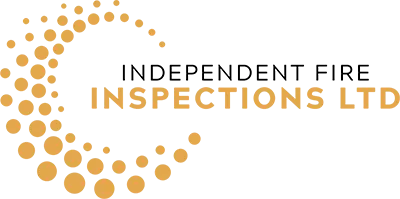
The Unseen Heroes Of Fire Safety: The Role Of Fire-Stopping Inspectors
Fire can be highly destructive, tearing unobstructed from one room to another in minimal time. But where there is fire, there is inevitably dense smoke and, often, toxic fumes or gases, which pose a more immediate risk to building occupants than the flames themselves, as they can penetrate even the tiniest gaps long before the fire spreads. In a fire, the concentration of oxygen in the air plummets to less than 15 per cent, hastening death through asphyxiation.
Containing smoke and fire in a building through a prevention programme is essential, alongside installing and maintaining safety equipment, such as alarms, sprinkler systems, and emergency lighting. Fire safety inspectors are the unsung heroes of fire prevention, working tirelessly behind the scenes to ensure that systems operate correctly and that buildings are free from defects that could allow smoke and flames to spread rapidly. In this article, we’ll explore the important role they play in fire safety inspections to make buildings safer for everyone.
What Are Fire-Stopping Systems?
Fire-stopping systems utilise fire-resistant materials and seals to prevent the spread of smoke and fire through concealed spaces such as walls, floors, ceilings, doors, and even in small gaps, for example, the voids around pipework. By creating a barrier that limits the movement of flames, heat, and harmful gases, fire safety is enhanced, and occupants are afforded more time to evacuate, free from danger.
Fire-stopping inspectors play a crucial role in fire safety management within buildings in three key areas:
1. Identifying Weaknesses In The Fabric Of The Building
A critical aspect of a fire-stopping inspector's role is identifying areas where fire and smoke can spread. Fires often start in one area but can quickly move through hidden spaces, such as wall cavities, ductwork, and voids, to engulf an entire building. A fire-stopping inspector's expertise allows them to pinpoint vulnerable areas and arrange preventive measures, such as installing fire-resistant materials and sealing gaps. By doing so, they protect the property and the lives of those using the building.
2. Conducting Comprehensive Risk Assessments
It can take less than three minutes for smoke to spread once a fire has started, and if the blaze is in an isolated area and is unnoticed, the danger level is even higher. With a keen eye for potential hazards, fire-stopping inspectors will thoroughly assess the premises to minimise the smoke and fire spreading risk. For example, they can assess how smoke could filter through a building from different high-risk areas and devise appropriate strategies to prevent this, protecting lives and property.
3. Ensuring Legal Compliance
Fire-stopping inspectors also play a crucial role in helping building owners and managers to fulfil their legal obligations related to fire safety. Compliance with fire regulations is compulsory, with failure to adhere resulting in severe consequences, such as fines or imprisonment. Fire-stopping inspectors help to ensure that fire-stopping systems are adequately maintained and inspected, thus ensuring that the building remains compliant.
Find Out More About Our Fire Safety Inspector Training
If you are interested in fire inspector training, please browse our courses or call IFI Group on 01522 904189 for more information.
Image source: Canva

